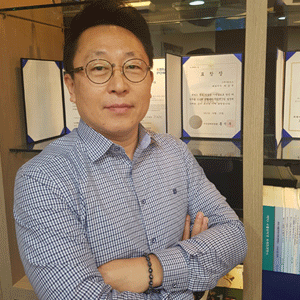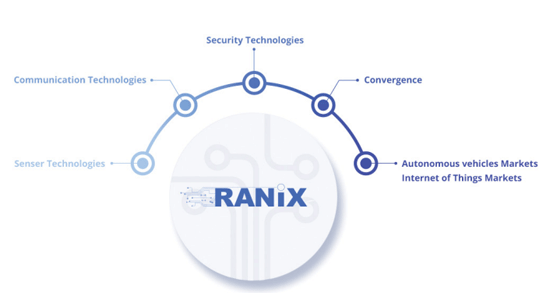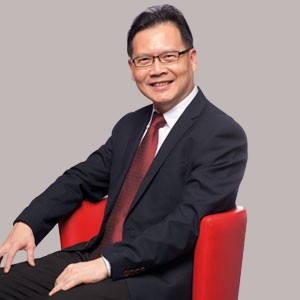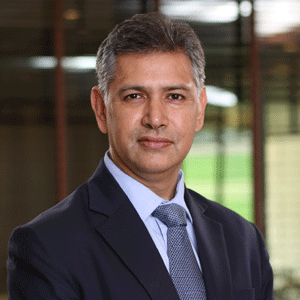THANK YOU FOR SUBSCRIBING

RANIX: The Wireless Communication Fuel to Safe Commuting

 Soung-Wook Choi, CEO
Soung-Wook Choi, CEORANIX develops system ICs, software, and hardware solutions for automotive communication and security. The company’s flagship offering, its V2X communication modem, is built on the 802.11p IEEE standard for information technology, providing high-speed security functions that facilitate up to ‘2000 signature verifications per second.’ Through V2X communication, drivers can receive information about the direction and speed of other vehicles on the road, and obtain real-time information about possible road hazards from the surrounding infrastructure, thus preventing traffic accidents and congestions. In compliance with the IEEE 1609.2 security standards, the modem also reduces the risk of hacking wireless communication devices that are installed in automobiles—a problem that persists predominantly with the upsurge of automotive communication devices. “Addressing the incidents of hacking, the FBI recently stated that driverless cars and advanced wireless communication devices could be used as lethal weapons, and because of that, automobile manufacturers are adding hardware security modules (HSM) along with the internal electronic devices of a vehicle,” states Soung-Wook Choi, CEO of RANIX.
Pilot Programs and Collaborations
RANIX has cemented its ground in the communications security solutions space by partnering with numerous automakers in recent years. One among these collaborations with a Korean carmaker aspiring to develop V2X communications security solutions exemplifies the effectiveness of RANIX’s capabilities. The carmaker was unable to implement signature verification for more than 100 cycles per second using the available chipsets; their requirement of 1000 cycles per second was left unfulfilled. At the time, though RANIX’s V2X communication chip was only capable of 400 cycles per second, the collaboration improved the carmaker’s efficiency by four times. “Automakers, today, are demanding more than 3000 signature verification per second as an enhanced security requirement for V2X communication terminals, and our security features now have the fastest signature verification, delivering more than 2000 cycles per second,” adds Choi.
RANIX was also part of the Cooperative-ITS pilot program conducted between 2014 and 2017 in Korea, where companies were required to pass the standard performance tests from certification authorities to bid for the project. Though only ten engineers from RANIX worked on the project, the company actively supported one particular consortium, despite having limited expertise in V2X communication at the time, and developed a V2X terminal in as less as five months. Choi recollects the incident stating, “I remember working with fellow engineers all day and night for months, where we were able to pass the tests in a very short span of time.”
Our security features now have the fastest signature verification, delivering more than 2000 cycle per second
The Road to Excellence
RANIX was established during a time when Korea was a world leader in ‘semiconductor memory.’ However, the application specific integrated circuit (ASIC) field was not showing significant growth. The lack of talent resources with the required design experience and the preference for foreign-made semiconductors by system vendors were major impediments to industrial growth. RANIX’s founding members, comprising first and second-generation engineers in the field of ASIC design in Korea with 10 to 15 years of experience, joined forces to revitalize and develop the stagnant ASIC industry in Korea; the collaboration was aimed at the development of automotive ASIC products that would potentially lead the future markets.
 Recently, RANIX has added the newly standardized 5G V2X communication technology to their development portfolio to further enhance the performance and efficiency of their V2X communication solutions. In addition to achieving these milestones, the company is planning to release a total solution for V2X, including steadily improved and competitive chips, S/W and H/W solutions. As a part of their expansion plans, the company aims to enhance its global footprint and venture into markets beyond Korea with their automotive security solution in addition to V2X communication solution.
Recently, RANIX has added the newly standardized 5G V2X communication technology to their development portfolio to further enhance the performance and efficiency of their V2X communication solutions. In addition to achieving these milestones, the company is planning to release a total solution for V2X, including steadily improved and competitive chips, S/W and H/W solutions. As a part of their expansion plans, the company aims to enhance its global footprint and venture into markets beyond Korea with their automotive security solution in addition to V2X communication solution. It goes without saying that these developments, future blueprints, and achievements have established RANIX as one of the most promising solution providers, not just in the Korean but the global marketplace as well.
The Arsenal of Wireless Communication
RANIX’s portfolio of communication peripherals that include the V2X communication modem, high-performance DSRC modem, S/W stack, and H/W solution not only address the risks of hacking but also support other users developing V2X communication systems. RANIX procured the V2X technology from Electronics and Telecommunications Research Institute (ETRI) in Korea, and is developing the technology independently for the last eight years; its research has already made many advances in terms of functionality and performance. As the V2X umbrella houses vehicle-to-vehicle (V2V), vehicle-to-infrastructure (V2I), vehicle-to-pedestrian (V2P), and vehicle-to-network (V2N) communications, the company’s solutions enable vehicles to proactively communicate and engage with different elements of the surroundings, analyzing the way traffic or pedestrians interact with vehicles using the RANIX’s V2X solution. It delivers a reduced reaction rate and increased quality in communication. This allows the V2X modem to predict unforeseen circumstances caused either by other vehicles or pedestrians passing by. “A split second could change everything,” is what the company believes in, upholding the reaction time and the operational agility provided by its V2X communication module.
In addition to the V2X modem chips, RANIX is conjointly developing software stacks that mount on the chip and development environments such as EVM and SDK to support customer's system development. The company’s efforts were rightly rewarded when it participated in the plug-test conducted in Korea, effectively passing the communication performance and compatibility test through various measurement devices. “We are developing all of these solutions in-house to provide a systematic and optimized solution for interworking between chips, S/W and H/W. Customers can complete product development more quickly with this unified configuration solution. Our aim is to help customers develop V2X technology and be a part of the development process easily and economically,” adds Choi.
RANIX has also worked on the development of the Korean standard modem SoC for highway electronic toll collection system (ETC). This product has been installed in Hyundai-Kia Motor’s room mirror type ETC terminal since 2008. Today, RANIX occupies more than 85 percent of the Korean ETC market. With much of the company’s work leading the Korean market, Choi mentions a recent acclamation given to RANIX: “Being the only Korean company to develop IEEE 802.11p based V2X modem chips since 2010, we were selected as a ‘Korea-Brain Power Company’ by the Korean government in 2014 and 2016. We also received the Grand Prize at ‘IoT Innovation Award (Smart Traffic Sector)’ in 2017.” These accolades rightly substantiate RANIX’s credibility in the industry, offering automakers a proficient array of communication peripherals for various applications such as IoT networks, autonomous driving, and security and authentication solutions.

I agree We use cookies on this website to enhance your user experience. By clicking any link on this page you are giving your consent for us to set cookies. More info













